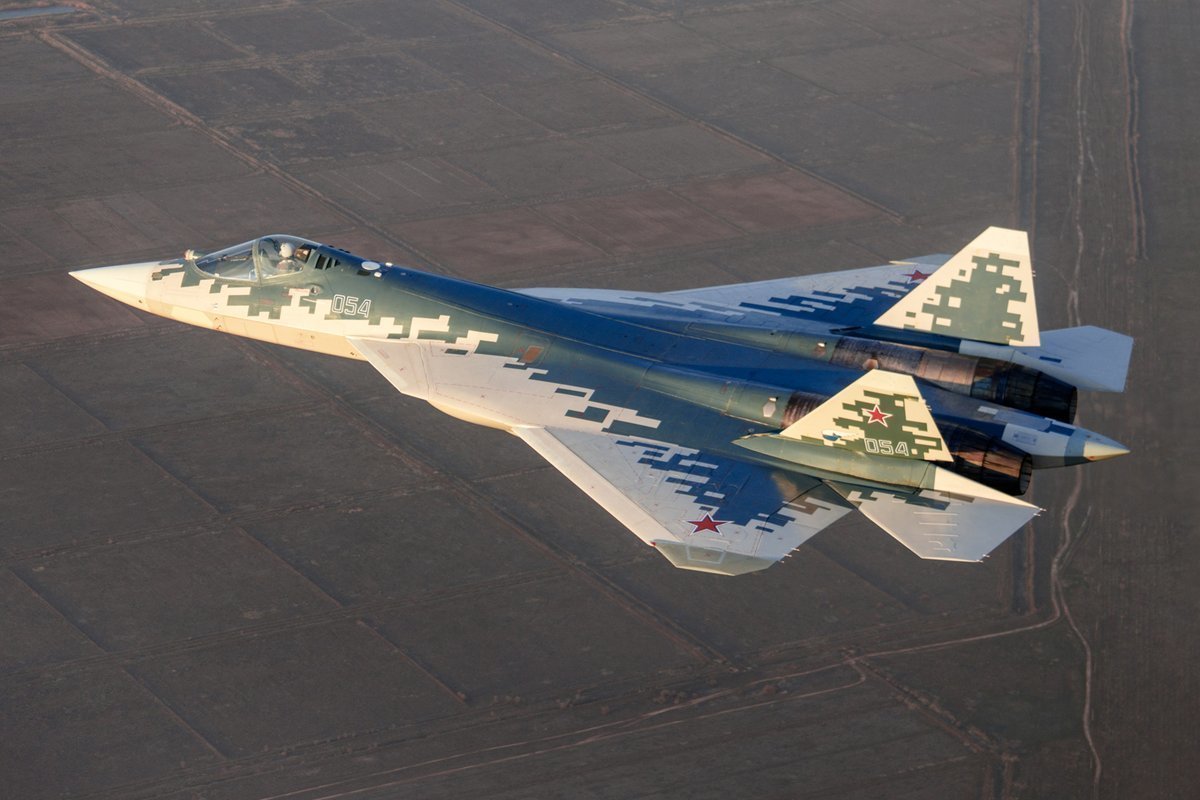Only three countries in the world - Russia, China and the United States - have been able to develop fifth-generation fighters. However, these programs face certain difficulties, which include problems with stealth technology and engine development and maintenance.
Russia, China and the US have programs to build fifth-generation fighters Russia's Su-57, China's J-20 and the U.S. F-35 face different challenges.
The US built the first fifth-generation fighter, the low-observable Lockheed Martin F-22 Raptor, and the project was followed by the Lockheed Martin F-35 Lightning II strike fighter. Russia and China have the Su-57 and Chengdu J-20, respectively.
The F-22 is no longer in production. And each of the three newest aircraft considered fifth-generation fighters, even if some of them don't meet all the relevant requirements, faces problems.
To be officially accepted as a fifth-generation fighter, an aircraft must have certain characteristics, including stealth to avoid detection and the ability to fly at supersonic speeds without activating afterburners.
The Su-57 is Russia's first attempt at a fifth-generation fighter, but analysts question whether it really meets that requirement given its shortcomings in several key categories.
Known in NATO as the Felon, the Su-57 was delivered to the Russian military in 2020. Moscow is said to have just 10 of these aircraft in its arsenal, but Russian state media suggest that this number will increase to 22 by the end of 2025 and grow to 76 units by 2028. It is unclear whether these plans will materialize.

The Su-57 first gained combat experience in Syrian skies in 2018. Last year, Russian officials said the aircraft had been used in combat operations in Ukraine, a claim supported by intelligence published by the UK Ministry of Defense. But while the aircraft may have been involved in some aerial combat, there is little evidence of widespread use of the Su-57 in the ongoing military conflict in Ukraine.
One explanation for its low involvement may be that the Russian aircraft lacks the low-observable capability that would allow it to act as a full-fledged, latest-generation fighter. Problems with the aircraft include Moscow's apparent difficulty in equipping it with stealth engines and low-profile hull panels that could adequately reduce its radar visibility.
the aircraft can only carry an older version of the R-77 air-to-air missile. It has ‘folding lattice ribs that prevent it from being placed inside the aircraft and therefore jeopardize its stealth’
Developed by aerospace and defense company Lockheed Martin, the F-35 is the second fifth-generation fighter in the US arsenal after the F-22 Raptor and is available in three variants.
The US Marine Corps' F-35B is capable of shortened takeoff and vertical landing and first achieved initial combat readiness, or IOC, in 2015. The US Air Force uses the F-35A, which reached IOC in 2016, while the US Navy uses the F-35C - it entered service by 2019.
The aircraft, designed for ground target attack, air-to-air combat and integrated operations, has patrolled Europe and the Pacific and had some combat experience in the Middle East.
The U.S. military and a number of U.S. allies operate this fifth-generation aircraft. Israel was the first country to use the aircraft in combat.
The US military has about 450 F-35s and the Pentagon plans to purchase about 2,500 more over the next few decades. The estimated cost of this programmed is more than $1.7 trillion, most of which will be spent on operating and repairing the aircraft. The report identifies several specific problems at military installations, including shortages of support equipment, spare parts, adequate training and technical data - all of which can contribute to maintenance delays. The report also found that the F-35 programmed is behind schedule in establishing facilities for repairs and that the US government relies heavily on contractors, reducing its own decision-making capabilities.
On top of the F-35 program's problems, a December report by the Audit Chamber revealed that there are problems with the fighter's cooling system. It is overloaded, which can increase engine wear, shorten engine life and increase maintenance costs by billions of dollars.


















